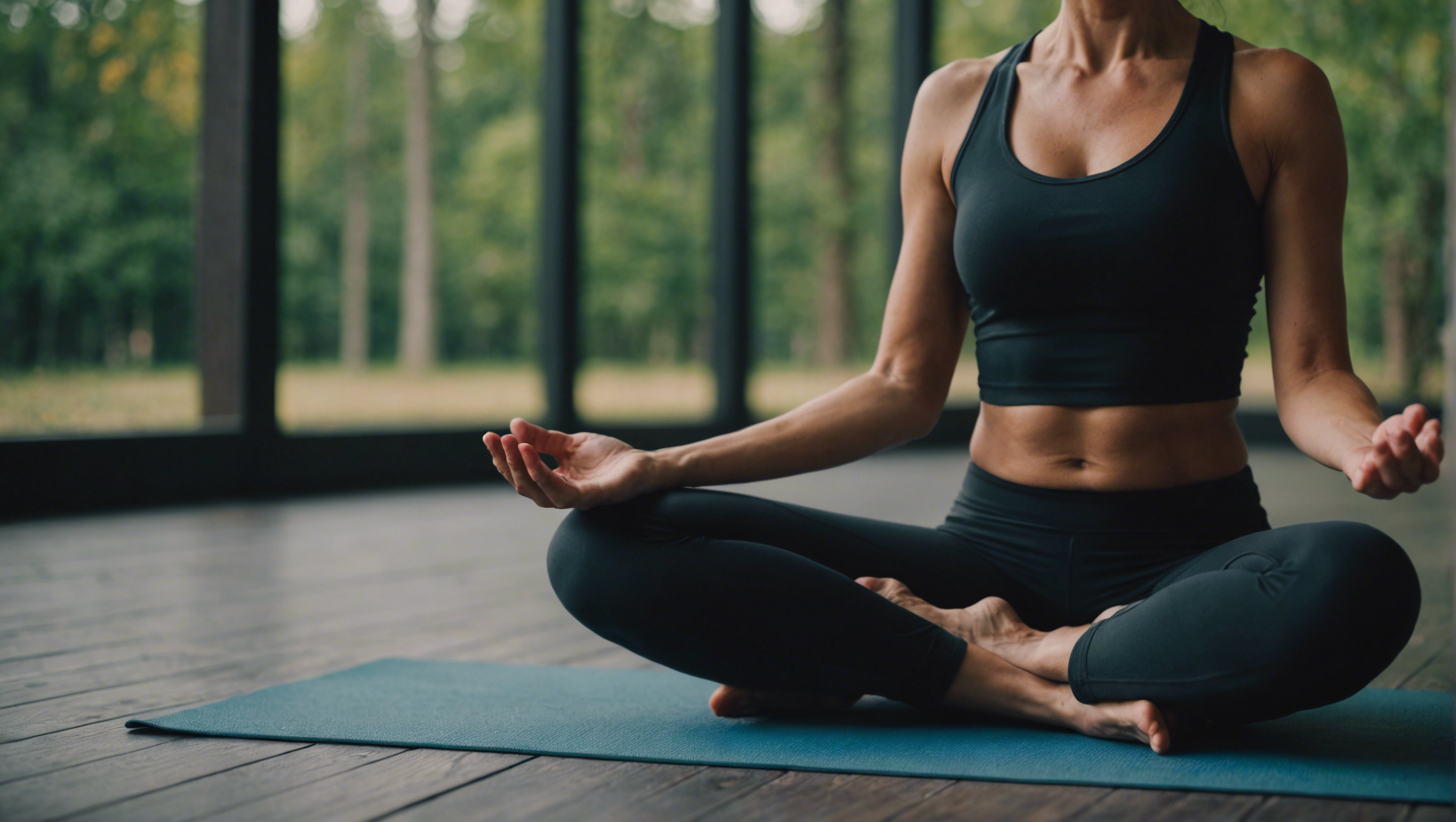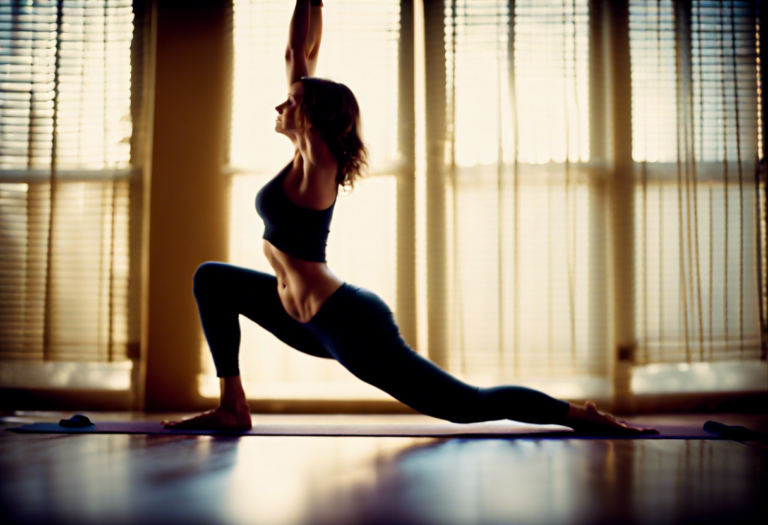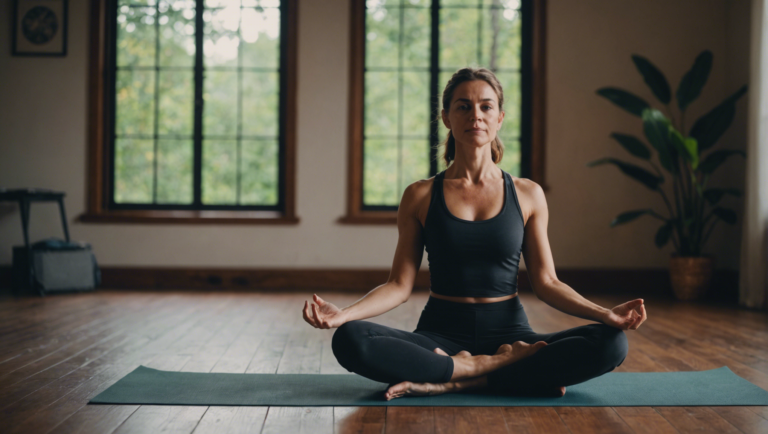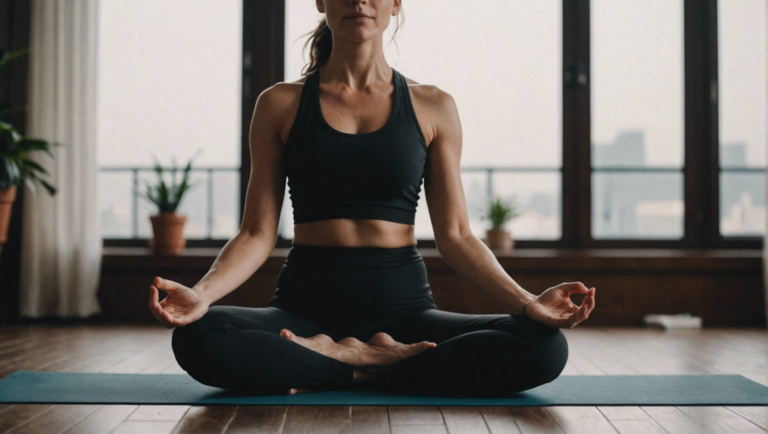Optimal Daily Yoga Duration: How Much Should I Do?
Unveiling the Ideal Yoga Duration for Daily Practice
Embarking on a journey into yoga demands an exploration of not only its practices but also the optimal duration for engaging in it daily. The quest to unveil the most beneficial length for yoga sessions lies at the intersection of personal goals, health considerations, and lifestyle choices. Broadly speaking, the essence of yoga transcends mere physical exercise, intertwining with mental and spiritual wellbeing, thereby making the question of its ideal daily duration deeply personal and variable.
Discovering Your Yoga Practice Sweet Spot
Determining the right amount of yoga each day hinges on a multitude of factors including, but not limited to, individual fitness levels, objectives, schedules, and yoga styles. For beginners, the threshold often starts modestly, suggesting that even 15 to 20 minutes a day can introduce significant benefits. This duration is long enough to foster a habit, ensuring consistency without overwhelming the practitioner.
Balancing Duration with Intensity
The intensity of the yoga session plays a crucial role in defining its optimal length. A gentle sequence, emphasizing stretches and relaxation, might be prolonged without adverse effects, whereas more intense forms like Ashtanga or Power Yoga necessitate shorter durations to avoid overexertion and injury. Understanding this balance is pivotal in crafting a yoga routine that nurtures rather than depletes.
Listening to Your Body’s Signals
The core principle of yoga promotes harmony and responsiveness to one’s own body signals. Therefore, the ideal duration may vary from day to day. Some days, the body yearns for longer sessions of soothing, meditative practices, while on others, a brief, energizing routine suffices. Cultivating awareness through practice enables individuals to attune to their needs, making yoga a flexible and adaptive component of their daily lives.
Aligning Practice with Goals and Life
Life’s demands inevitably influence the feasible duration for daily yoga. For those integrating yoga mainly for stress reduction or to complement other fitness routines, a shorter daily practice may be more realistic and equally effective. Conversely, individuals pursuing yoga with the intent of deeper spiritual exploration or significant physical transformation might find longer sessions indispensable to their progress.
The Role of Guided Sessions and Self-Practice
The choice between guided yoga sessions and self-practice also impacts the manageable daily duration. Guided classes, whether online or in person, often span from one hour to ninety minutes, providing comprehensive routines that ensure a balanced practice. Self-practice, on the other hand, offers the flexibility to adjust the duration as needed, potentially encouraging more frequent engagement.
The Impact of Regularity over Duration
Consistency emerges as a critical factor, often overshadowing the emphasis on daily duration. Regular, committed practice, even if shorter in length, culminates in profound benefits over time. This approach nurtures not only physical flexibility and strength but also mental resilience and emotional balance, underlining the significance of making yoga an integral, unwavering part of one’s daily routine.
Embracing the Evolution of Your Yoga Journey
The journey through yoga is inherently evolutionary, with its optimal daily duration ebbing and flowing in tandem with personal growth, changing circumstances, and deepening understanding of the practice. This dynamic interplay invites a departure from rigid schedules, advocating instead for a flexible approach that respects the body’s evolving needs and the mind’s quest for balance.
Upholding the principles of yoga requires honoring the individuality of the practice, including its duration. The metrics for success in yoga extend beyond the clock, embedding themselves in the quality of presence, the depth of breath, and the authenticity of the connection with oneself. As practitioners navigate through their yoga journey, the insights gleaned from each session, irrespective of its length, accumulate, guiding them toward a well-rounded, fulfilling practice that champions personal wellbeing in its totality.
Balancing Intensity and Relaxation in Your Yoga Routine
Finding the perfect harmony between intensity and relaxation in yoga can profoundly impact your practice’s effectiveness, your mental health, and overall well-being. The beauty of yoga lies in its flexibility and adaptability to cater to both your physical and mental needs. Here, we explore steps to seamlessly blend vigorous sequences with calming poses, creating a balanced routine that nurtures body, mind, and spirit.
Embrace the Power of Personalization
Yoga is not one-size-fits-all; it’s a deeply personal journey. Begin by assessing your current physical condition, emotional state, and what you wish to achieve with your practice. Are you looking to build strength, reduce stress, enhance flexibility, or perhaps a combination of these? By identifying your goals, you can tailor your routine to include a balance of asanas (poses) that address both your need for physical challenge and relaxation.
Master the Art of Sequencing
The sequence in which you perform your yoga poses can significantly affect the balance between intensity and relaxation. A well-structured sequence often starts with a warm-up, gradually moves into more physically demanding poses, and ends with cooling down. Following this order ensures your body is properly prepared for each stage, reducing the risk of injury and allowing for a more effective practice. Transitioning smoothly from dynamic movements to restorative poses can help maintain a rhythm that supports both exertion and recovery.
Integrate Breathwork for Harmony
Breathwork, or pranayama, is a cornerstone of yoga that bridges the gap between the physical and mental aspects of your practice. Integrating breathwork with your movements can enhance the intensity of your poses while also promoting relaxation. For instance, techniques like Ujjayi breath can energize your practice and improve focus, while Nadi Shodhana (alternate nostril breathing) is excellent for calming the mind and balancing emotions.
Leverage Meditation and Mindfulness
Meditation and mindfulness into your yoga routine serves as a powerful tool for relaxation, allowing you to reap the full benefits of your practice. Even a few minutes of meditation can significantly reduce stress and increase your sense of peace and contentment. Mindfulness, practiced throughout your session, encourages you to remain present and engaged with each pose, deepening the connection between body and mind.
Adjust Duration and Frequency
The length and frequency of your practice play a critical role in achieving balance. There’s no one-size-fits-all answer, but generally, a shorter daily practice that includes both dynamic and restorative elements can be more beneficial than a lengthy session that’s hard to fit into your schedule. Consistency is key; even 20-30 minutes a day can significantly impact your physical health and mental well-being.
Listen to Your Body
Perhaps the most crucial advice is to listen to your body. Yoga is about unity and connection, not pushing yourself to the point of discomfort or injury. If a pose feels too intense, modify it or take a break. Recognizing when to challenge yourself and when to ease back is vital for nurturing both strength and serenity.
Achieving a balance between intensity and relaxation in your yoga routine is a journey that requires patience, experimentation, and self-awareness. By personalizing your practice, mastering the art of sequencing, integrating breathwork, leveraging meditation, adjusting duration, and listening to your body, you can create a balanced routine that supports both your physical and emotional well-being. Remember, the goal of yoga is not perfection but progress toward harmony within yourself.
The Influence of Yoga on Mental Health: Finding Your Time Sweet Spot
Discovering the Mental Health Benefits of Yoga: Unraveling the Optimal Duration
Yoga, an ancient practice with roots stretching back thousands of years, has long been celebrated for its physical, mental, and spiritual benefits. In our modern, fast-paced world, mental health issues have surged, making practices like yoga more relevant than ever. But amidst the wealth of positive anecdotes and studies, there arises a practical question: what is the optimal daily yoga duration for enhancing mental health?
Unveiling the Link Between Yoga and Mental Health Enhancement
Yoga stands at the confluence of physical exertion and mental discipline, offering a unique blend that benefits overall well-being. Its techniques, involving various postures (asanas), breathing exercises (pranayama), and meditation, aim to bring about a state of mental and physical equilibrium. Scientific studies have underscored yoga’s efficacy in reducing stress, anxiety, depression, and improving mood and cognitive function. This lends credence to the practice as a valuable tool in the arsenal against mental health issues.
Pinpointing the Ideal Yoga Duration for Mental Wellness
Determining the optimal yoga duration for mental health is not a one-size-fits-all answer. Various factors, including individual physical fitness, lifestyle, and specific mental health challenges, play significant roles in defining this duration. However, experts generally recommend starting with short sessions, about 15 to 20 minutes a day, and gradually increasing the duration as one becomes more comfortable with the practice.
For individuals specifically aiming to combat stress and anxiety, a daily practice of 20 to 30 minutes can offer substantial benefits. In cases where yoga is used as a complementary therapy for more severe mental health issues, longer sessions ranging from 45 to 60 minutes, under the guidance of a qualified instructor, may be more beneficial.
Balancing Quantity and Quality in Your Yoga Practice
The maxim "quality over quantity" holds profoundly true in the context of yoga. A shorter, focused session where mindfulness and correct posture alignment are prioritized can be more beneficial than longer sessions marked by distraction or incorrect technique. It is crucial, therefore, to focus on the quality of each posture and breath, allowing the mind to engage fully with the body’s movements.
For many, incorporating mindfulness and meditation into their yoga practice enhances its mental health benefits. Even a few minutes of mindful breathing or meditation at the beginning or end of a yoga session can significantly amplify its positive impact on mental well-being.
Listening to Your Body: The Personalized Approach
Yoga emphasizes self-awareness and listening to one’s body, advocating for a personalized approach to practice. Some days, your body and mind might crave a longer session of gentle, restorative yoga, while on others, a brief, energetic session might be more appealing. Tuning into your body’s needs allows you to adjust your practice accordingly, making yoga a truly personal journey toward mental health improvement.
The Verdict: Your Unique Yoga Prescription
Ultimately, the optimal duration of daily yoga for mental health cannot be encapsulated in a universal prescription. It is a dynamic interplay between an individual’s physical capabilities, mental health needs, and lifestyle. Starting with short sessions and progressively tuning in to your body’s responses enables you to find your own "sweet spot" — a duration that offers the most significant mental health benefits for you personally.
Embracing yoga as a journey rather than a destination allows for flexibility and personalization in practice. As researchers continue to unravel the complexities of yoga’s impact on mental health, individuals can derive the most benefit by focusing on their unique experiences and responses to the practice, always guided by mindfulness and self-compassion.
In the end, finding one’s optimal daily yoga duration is less about adhering to prescriptive timings and more about discovering the balance that best supports individual mental wellness. Through regular practice, mindfulness, and a willingness to adjust, each person can find their path to improved mental health through yoga, tailored precisely to their needs and capacities.
Integrating Yoga into Busy Lifestyles: Practical Tips for Consistency
For many, the desire to practice yoga is often sidelined by the hustle and bustle of daily life. Yet, finding space for this ancient discipline can profoundly impact physical health, mental clarity, and emotional well-being. Understanding that time is a valuable commodity, this guide offers practical advice for weaving the practice of yoga seamlessly into a busy schedule, ensuring consistency without overwhelming your already packed agenda.
Embrace Micro-Practices
The misconception that yoga requires an hour of uninterrupted focus can deter many from starting. The truth is, yoga can be modular, fitting into the nooks and crannies of your day. Consider integrating five to ten-minute sessions focused on specific poses or breathing techniques. These micro-practices can be as simple as a series of sun salutations upon waking or deep breathing exercises at your desk. The cumulative effect of these mini-sessions can significantly enhance flexibility, reduce stress, and improve focus, underscoring the principle that when it comes to yoga, frequency can outweigh duration.
Utilize Technology
The digital age has made access to yoga instruction more convenient than ever. Numerous apps and online platforms offer sessions ranging from five minutes to full hour-long practices, catering to all levels and styles. Leveraging these resources can help you stick to your yoga routine, whether you’re at home, traveling, or crunched for time at work. Additionally, setting reminders can serve as a prompt to take a brief yoga break, reinforcing the habit and ensuring consistency in your practice.
Be Flexible with Your Schedule
Rigid schedules can often lead to disappointment and discontinuation of practice. Instead, adopt a flexible approach by identifying pockets of free time throughout your day. Early morning, lunch breaks, and evening are typical windows where a yoga session can be conveniently slotted in. If an unexpected commitment arises, instead of skipping your practice entirely, consider shortening it or moving it to a different time slot. This adaptability can make the difference between maintaining a regular practice and abandoning it.
Create a Conducive Environment
Designating a specific area for your yoga practice can significantly enhance your consistency. This doesn’t necessarily mean you need a dedicated room; a small, tranquil corner in your home or office can suffice. Equip this space with essential props such as a yoga mat and blocks, if you use them, and perhaps an inspirational item like a plant, a piece of art, or a photograph that soothes you. This personal sanctuary can serve as a visual cue to practice and a space where you’re psychologically prepared to transition from the chaos of daily life into the calm and focus of yoga.
Commit to a Routine but Stay Open to Variation
While consistency is key, monotony is the enemy of motivation. To keep your practice fresh and engaging, alternate between different types of yoga and incorporate new poses into your routine. This approach not only maintains your interest but also promotes a more balanced development of flexibility, strength, and mental focus. Furthermore, periodically attending a class can provide new insights and techniques to enrich your personal practice.
Integrating yoga into a bustling lifestyle requires a blend of intention, flexibility, and creativity. By adopting micro-practices, leveraging technology, and being adaptable, you can carve out time for this enriching practice without adding to your stress. Remember, the goal is to enhance your well-being, so approach this integration with kindness and patience towards yourself. Over time, these moments of stillness and stretch will become non-negotiable pillars of your daily routine, offering a wellspring of vitality and calm in the midst of life’s storms.
Beyond the Mat: The Holistic Benefits of Maintaining a Regular Yoga Practice
Yoga, often perceived solely as a physical practice involving various postures and breathing techniques, transcends far beyond its apparent boundaries. The holistic benefits of maintaining a regular yoga practice are manifold, encompassing physical, mental, and spiritual well-being. Engaging in yoga is not about the temporary accomplishments on the mat; it’s about embracing a lifestyle that fosters overall health and harmony.
The Physical Rewards of Yoga
The immediate benefits of yoga that most practitioners can attest to involve the enhancement of flexibility, balance, and strength. However, the impacts of a consistent practice delve deeper into the physiological realm, promoting enhanced cardiovascular health, improved respiratory efficiency, and a robust immune system. Through a variety of asanas (poses) and pranayamas (breathing exercises), yoga stimulates the internal organs, aids in detoxification, and fosters hormonal balance, leading to improved metabolic functions and energy levels.
Mental Clarity and Emotional Balance
One of the most profound benefits of yoga is its ability to quiet the mind and bring about a state of inner peace and clarity. In today’s fast-paced world, stress has become a ubiquitous malaise, contributing to an array of mental health issues. Yoga, with its meditative practices, offers a sanctuary for the mind, enabling practitioners to cultivate mindfulness and a heightened state of awareness. This mental discipline can translate into reduced stress levels, anxiety, and depression, paving the way for a more balanced and harmonious emotional state.
The Spiritual Journey
While the physical and mental benefits of yoga are tangible and well-documented, the spiritual aspects are equally significant, albeit more personal and subjective. Yoga offers a pathway to explore one’s spirituality, regardless of one’s religious beliefs. It encourages self-reflection, connection with the self, and a deeper understanding of one’s purpose and place in the universe. This spiritual exploration can lead to profound personal growth, a sense of contentment, and a feeling of being at one with the world.
Encouraging Mindful Eating and Healthy Lifestyle Choices
Regular yoga practitioners often report a natural shift towards healthier lifestyle choices, including nutritional habits. Yoga fosters an increased awareness of the body’s needs and signals, encouraging mindful eating. This awareness can lead to a reduction in emotional eating and a preference for nutritionally rich foods that nourish the body and enhance well-being. The discipline and self-awareness gained through yoga can extend to other areas of life, promoting healthier habits and self-care routines.
Community and Connection
The practice of yoga does not exist in isolation. It is part of a global community that shares common values of respect, compassion, and mindfulness. Participating in regular yoga classes can foster a sense of belonging and connectedness, not only to those within the yoga community but also to humanity as a whole. This sense of community can be deeply enriching, offering emotional support, fostering interpersonal relationships, and promoting an ethos of compassion and understanding.
Nurturing Resilience and Personal Growth
Yoga challenges individuals both on and off the mat. It teaches resilience, patience, and perseverance. Each practice session is an opportunity to learn something new about oneself, whether it’s pushing past previous physical boundaries, overcoming mental blocks, or finding peace in challenging situations. This process of continual learning and growth is integral to the yoga journey, empowering individuals to lead more fulfilled and authentic lives.
Embracing a regular yoga practice is about much more than achieving the perfect pose; it’s about embarking on a holistic journey towards optimal health, mental clarity, spiritual growth, and a connectedness with the world. The transformative power of yoga lies in its ability to foster a balanced and harmonious life, both on and off the mat.
Conclusion
Diving deep into the journey of yoga uncovers layers of personal exploration, health benefits, and a harmonious balance between the mind and body. The quest to uncover the ideal yoga duration for daily practice reveals that there isn’t a one-size-fits-all answer, but rather a flexible guideline allowing individuals to tailor their practices to fit their needs, goals, and lifestyles. Balancing the intensity and relaxation in one’s yoga routine emerges as a foundational strategy, emphasizing the importance of listening to the body’s signals and adjusting accordingly. This approach not only enhances physical well-being but also cultivates a serene and centered mental state, which brings us to the profound influence of yoga on mental health.
Finding your time sweet spot is akin to discovering a personal sanctuary where tranquility and strength coexist, offering respite from the tumultuous pace of modern life. Yoga, in this light, serves as a bridge to a more balanced and grounded existence, underlining the necessity of infusing practices with mindfulness and intention. This mindful integration extends into navigating the challenges of maintaining consistency in yoga amidst busy schedules. Practical tips and strategies, such as setting realistic goals, creating a dedicated space, and integrating shorter sessions into daily routines, become invaluable tools in nurturing a sustainable practice. These adjustments ensure that yoga remains an accessible and enriching part of daily life, regardless of external demands.
Beyond the physical poses and sequences, the holistic benefits of maintaining a regular yoga practice unfold in myriad ways. It transcends mere physical exercise, delving into the spiritual and emotional realms, reinforcing the interconnectedness of our well-being. Regular practitioners often report enhanced clarity of mind, improved emotional resilience, and a deeper sense of self-awareness. These benefits collectively contribute to a more harmonious and fulfilled life, underscoring yoga’s role as a holistic health modality.
The synthesis of these elements—tailoring one’s practice to balance intensity with relaxation, harnessing yoga’s mental health benefits, weaving it seamlessly into daily life, and embracing its holistic impacts—crafts a comprehensive yoga journey that is as unique as each individual. The essence of this journey lies not in the quantifiable duration of daily practice but in the quality and consistency of the practice. It’s about forging a personal connection with yoga that evolves, adapts, and grows over time. This connection fosters a deeper understanding of oneself and cultivates an enduring commitment to personal well-being.
Yoga, therefore, is more than just a series of postures; it is a pathway to discovering balance, resilience, and tranquility amid the ebbs and flows of life. The ideal duration of daily yoga practice, then, becomes a fluid concept, one that each individual shapes in response to their inner rhythms and life circumstances. The true measure of yoga’s value lies in its capacity to enrich life, nurture wellbeing, and anchor us in a sense of peace and presence. In this light, the invitation to engage in daily yoga practice transcends the constraints of time, beckoning us instead toward an ongoing exploration of our potential for growth, healing, and transformation.
As we continue on our yoga journey, let us embrace the flexibility, personalization, and holistic perspective that define this ancient practice. By doing so, we open ourselves to the full spectrum of benefits yoga has to offer—benefits that ripple out into every facet of our lives. With each breath and movement, we cultivate a sanctuary within, a space of calm and strength that sustains us through life’s challenges and changes. This is the heart of yoga: a practice that, regardless of duration, becomes a profound source of balance, wellness, and joy on the journey of life.



